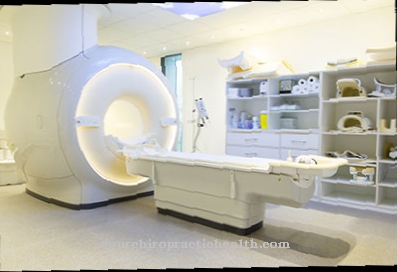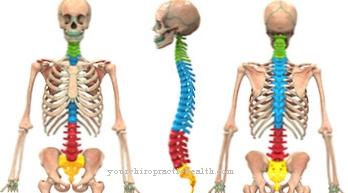As Heart rate monitor is called a heart rate monitor. It is able to measure the number of beats the heart delivers per minute.
What is a heart rate monitor?

Heart rate monitors are special devices for measuring the heart rate. They were introduced in 1983 and are also called Chest straps or Heart rate monitor known.
The heart rate monitors are primarily used by professional and recreational athletes. They serve to increase the quality of the training. But heart rate monitors are also of great interest for the health sector, fitness and wellness. In this way, the heart rate monitors contribute to a positive course of the sporting training and counteract any health risk.
Shapes, types & types
The most common form of a heart rate monitor is the chest strap. This is a belt that the wearer puts on around the chest. The heart rate is measured by two integrated skin electrodes. The chest strap picks up the impulses that are released through the skin.
To keep the skin resistance as low as possible, some moisture is required between the skin and the electrodes. This is formed by the accumulation of sweat under the belt during sporting activities. If this does not happen, it is possible to moisten the electrodes with a little water or electrode gel. The chest strap is primarily used for endurance sports to avoid overloading.
An alternative to the mobile chest strap are stationary heart rate monitors that are built into sports equipment. They record the heart rate with the help of two electrodes. To do this, however, the athlete has to hold them with his hands. With other heart rate monitors, the heart rate is registered via the earlobes. However, these two methods are not suitable for areas that are geared towards top athletic performance.
Since the chest strap limits the user's ability to move, there are now also heart rate monitors without a chest attachment. The precision of the measuring devices is as high as that of the chest straps. The measurement is made by placing the thumb or finger on a sensor. However, these devices are more useful for use on an exercise bike.
Since 2013 there has also been a heart rate monitor that actually looks like a wristwatch. It is also strapped around the arm like a watch. The device can take the measurement continuously without a finger sensor or a chest strap and display the heart rate. However, the new model is not yet considered reliable enough.
Structure & functionality
Heart rate monitors are now equipped with numerous different functions. In addition to measuring the heartbeats emitted per minute, you can, for example, calculate the calories consumed, count steps, measure the difference in altitude, and determine temperatures and loads. If the desired heart rate range is exceeded or not reached, the heart rate monitor also triggers an acoustic alarm.
The energy supply for chest straps is usually provided by a lithium button cell. To transmit the respective heart rate value, a VLF radio signal is emitted, which has a short range. To receive and evaluate the data, the heart rate monitor normally has a microcomputer that is shaped like a wrist watch. There are also high-quality bike computers that can receive and analyze the signal from the chest strap.
When choosing a heart rate monitor, it is important to ensure that important basic functions are available. It should be possible to enter personal and biometric data into the device. These include gender, age, training frequency, training goals and fat percentage. Furthermore, the heart rate monitor must have an EKG-accurate display and be able to divide the heart rate into a minimum pulse and a maximum pulse. The determination of the training duration, the display of the calories in kcal and the recording of the different training units are also important. It is important that the user has all the relevant data for an effective training and that they can be analyzed.
Medical & health benefits
The health benefits of heart rate monitors vary as they are used for a wide variety of purposes. Most users use heart rate monitors for optimal fat burning while running. In contrast, professionals use the devices more to create performance diagnostics.
Heart rate monitors are very useful in the warm summer months, as they can prevent the unhealthy exceeding of the performance limit. The physical strain is significantly greater at higher temperatures than when it is less warm. This also applies to the same distances. In the event of an overload, however, the heart rate monitor gives an alarm in good time.
A heart rate monitor is particularly recommended for beginners or people who only have a poor sense of their body. A heart rate monitor can also be useful for untrained people, runners who are only occasionally on the move, or overweight people. On the other hand, a heart rate monitor is also suitable for advanced runners who want to further improve their performance.
With the help of a heart rate monitor, the limits of different load areas can be positively influenced. This can be about burning fat, maxing out or achieving competition-specific endurance.
With all the positive benefits of heart rate monitors, however, it should be remembered that the body's reactions to physical stress are very different. In addition, by measuring the heart rate, conclusions can only be drawn to a limited extent about the consumption of fat and energy. The measuring devices cannot replace the careful observation of the organism. Nevertheless, the heart rate monitor helps inexperienced athletes to avoid risky misjudgments.



.jpg)












.jpg)






.jpg)


.jpg)

